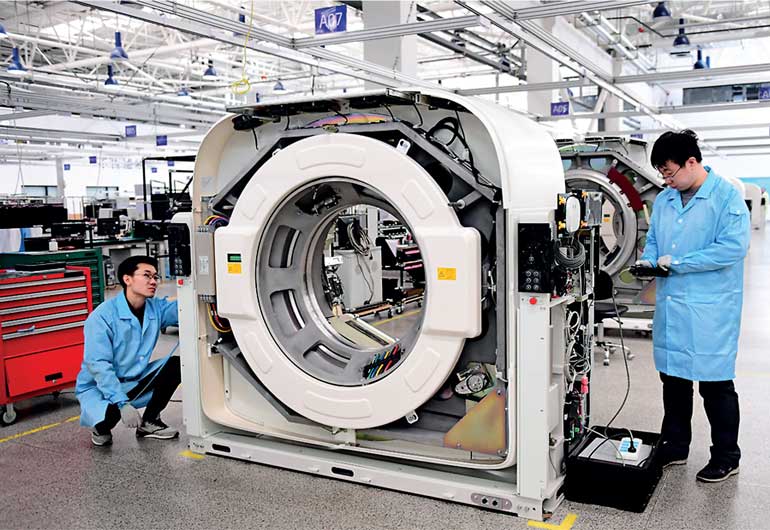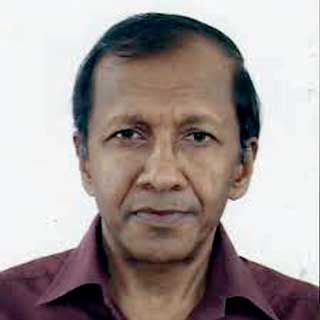Wednesday Jan 07, 2026
Wednesday Jan 07, 2026
Wednesday, 2 March 2022 00:00 - - {{hitsCtrl.values.hits}}

China is using its digital technology to maintain efficiency at operational levels of poverty alleviation
This paper is based on the interview with Dr. Sisira Pinnawala – Director of Studies at Veemansa Initiative and a former Professor of Sociology at the University of Peradeniya, on ‘Rising China and Lessons for Sri Lanka’. The interview series was launched by the Veemansa Initiative – an independent think tank in the areas of economic, political and social issues. Through this interview series, Veemansa brings about the views of intellectuals and experts on various dimensions of the miraculous development experience of China, by drawing lessons, parallels and prospects for Sri Lanka.
 Four decades ago, China was a poor country. It was poorer than Sri Lanka in terms of per capita income, while it had millions of poor who were faced with chronic poverty and starvation. But today China has been able to eradicate its acute poverty miraculously by achieving zero poverty by national poverty line. In fact, China’s national poverty line is even higher than the World Bank’s low-income international poverty line of $ 1.90 a day. If we apply the World Bank’s middle-income poverty line of $ 3.20 a day, still about 10% of the Chinese population can be considered as poor.
Four decades ago, China was a poor country. It was poorer than Sri Lanka in terms of per capita income, while it had millions of poor who were faced with chronic poverty and starvation. But today China has been able to eradicate its acute poverty miraculously by achieving zero poverty by national poverty line. In fact, China’s national poverty line is even higher than the World Bank’s low-income international poverty line of $ 1.90 a day. If we apply the World Bank’s middle-income poverty line of $ 3.20 a day, still about 10% of the Chinese population can be considered as poor.
Poverty alleviation
China is likely to reach upper middle-income level even before 2025 according to its current growth rate. Throughout the past two decades, China has maintained on average 8% rate of real GDP growth per annum. China has been able to end its chronic poverty because of its rapid economic growth combined with targeted poverty alleviating programs. Achieving poverty reduction in such magnitude and within two decades itself is a miracle.
Success of the Chinese economy is primarily a result of three factors: The first is the sustained rapid growth of the economy, the second is the careful economic planning and, the third is the commitment of its people in poverty eliminating strategy; apparently, the second and the third have contributed
 |
| Dr. Sisira Pinnawala |
immensely to the first. In all three areas, the Chinese Communist Party has played a crucial role, whereas in other countries there are no similar mechanisms.
Sri Lanka has a long history of implementing poverty alleviation programs, while some of them have been initiated even before the country’s political independence from Britain. One of the early attempts during the colonial times was the introduction of English ‘poor law’. After the independence in 1948, Sri Lanka adopted welfare programs which cover the country’s poor as well.
Sri Lanka’s effort
However, Sri Lanka’s formal and targeted poverty alleviation programs started only after opening its economy in 1977. It is because there was an understanding that the country’s poor is at risk in the face of market-oriented policies and structural adjustment programs until these programs deliver the expected income growth and employment opportunities. The first targeted poverty alleviation program initiated in the open economy framework was known as ‘Janasaviya’, which continued up to date under different titles.
As per statistical evidence, Sri Lanka’s achievement in poverty reduction has been a successful story too. According to official statistics, 26% of the people of Sri Lanka falls below the national poverty line in 1990/91, which declined to 8.9% by 2009/10 and to 4.1% by 2016.
The true picture is, however, much more complex than what is portrayed by statistics. A parallel between Sri Lanka and China shows that Sri Lanka is a lower middle-income country, whereas China is an upper middle-income country. If we apply the World Bank’s middle-income poverty line, nearly 10% of Sri Lanka’s population falls under poverty category. Therefore, whether Sri Lanka’s poverty reduction is a success story or not depends on what criteria we adopt in quantifying the poverty statistics. Secondly, there are significant regional and sectoral variations in poverty. Different provinces and districts are characterised by different levels of poverty. Poverty in the estates and rural sector is much higher than urban poverty. Thirdly, there is high income inequality among our population.
When we consider all these differences, Sri Lanka’s poverty elimination is not a successful story. In fact, there are countries in our regional such as Singapore, South Korea, Malaysia in the past and, India and Bangladesh at present, exhibit a fast track of poverty reduction. Therefore, Sri Lanka is not an outlier in poverty reduction in the Asian region as well.
Own mistakes
While Sri Lanka has valuable lessons to be learnt from China, it can also learn from its own mistakes in poverty reduction. When we look at the country’s own mistakes, they are twofold as operational problems and issues of strategies. Under the operational problems, one of the important allegations has been the fact that the people who deserve don’t get the needed support. There are more ‘Samurdhi’ beneficiaries than the number of poor in this country. There is also no efficient mechanism to monitor the performance of poverty alleviation programmes so that the poor continued to remain ‘poor’ contrary to the objective of poverty alleviation. Moreover, the political interference in the poverty alleviation programs at community level is a well-known issue.
At strategic levels, poverty alleviation programs are driven by technocrats and bureaucrats; it has effectively shut down the role of industry and business in poverty reduction. Lack of an ‘exit strategy’ is another issue that keep the poor in the same poverty alleviation programme for lifetime. Moreover, our poverty alleviation strategy is highly ‘centralised mechanism’ with no flexibility at local levels to be introduced into the program in spite of the fact that Sri Lanka has a well-established regional and local governance systems.
After all, the entire poverty alleviation program is ‘politicised’ at the central political level; that is why at the elections, the poverty alleviation program gets re-branded under different names. This is a major factor underlying the failure of poverty alleviation program of Sri Lanka.
Chinese lesson
The Chinese poverty alleviation program is fundamentally different, as it does not have any of the above problems. Although the goals of poverty alleviation are decided at central level, its operational flexibility at regional and local levels are important in addressing poverty issue at community level. In China, coastal regions are more developed than its interior regions, a fact that is reflected from the country’s poverty alleviation program.
China is using its digital technology to maintain efficiency at operational levels of poverty alleviation. Another major lesson that we need to learn from China is the way that it incorporates industry and business into the country’s national poverty alleviation program. After all, we have an important question about Sri Lanka’s ‘political will’ in making all these changes.
(The writer is a Professor in Economics at the University of Colombo who conducted the interview series on Rising China.)